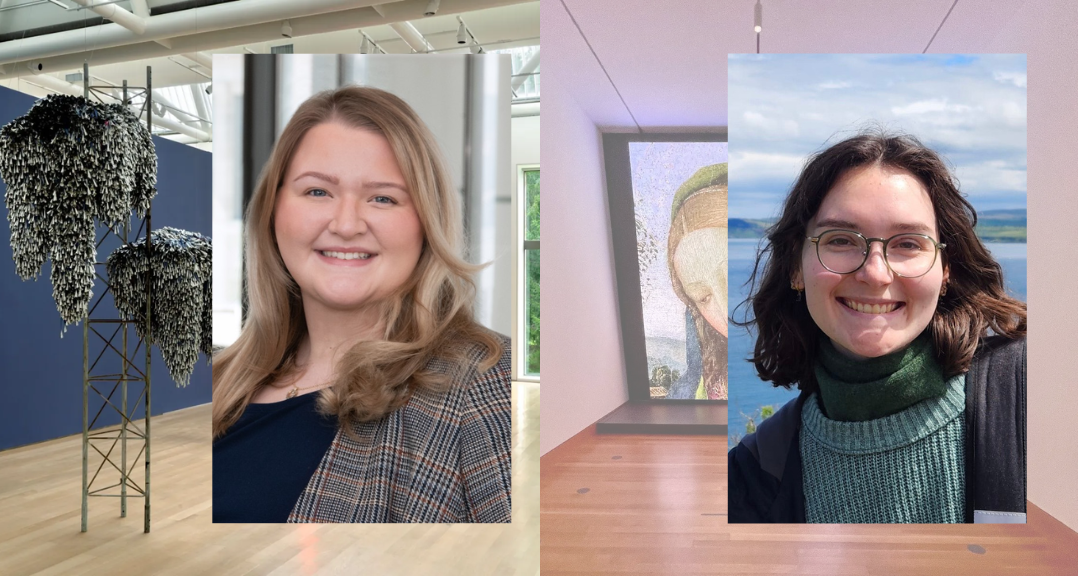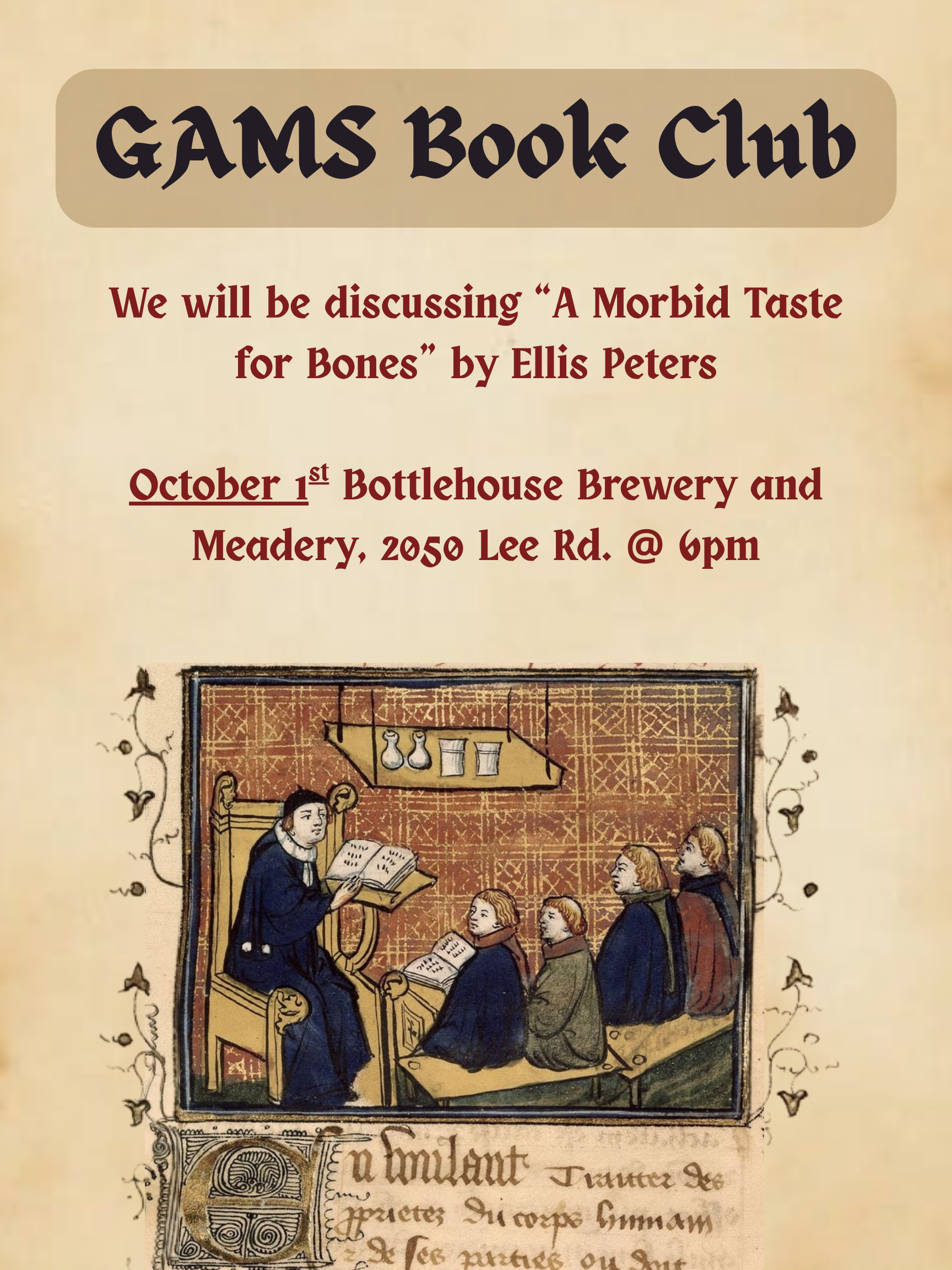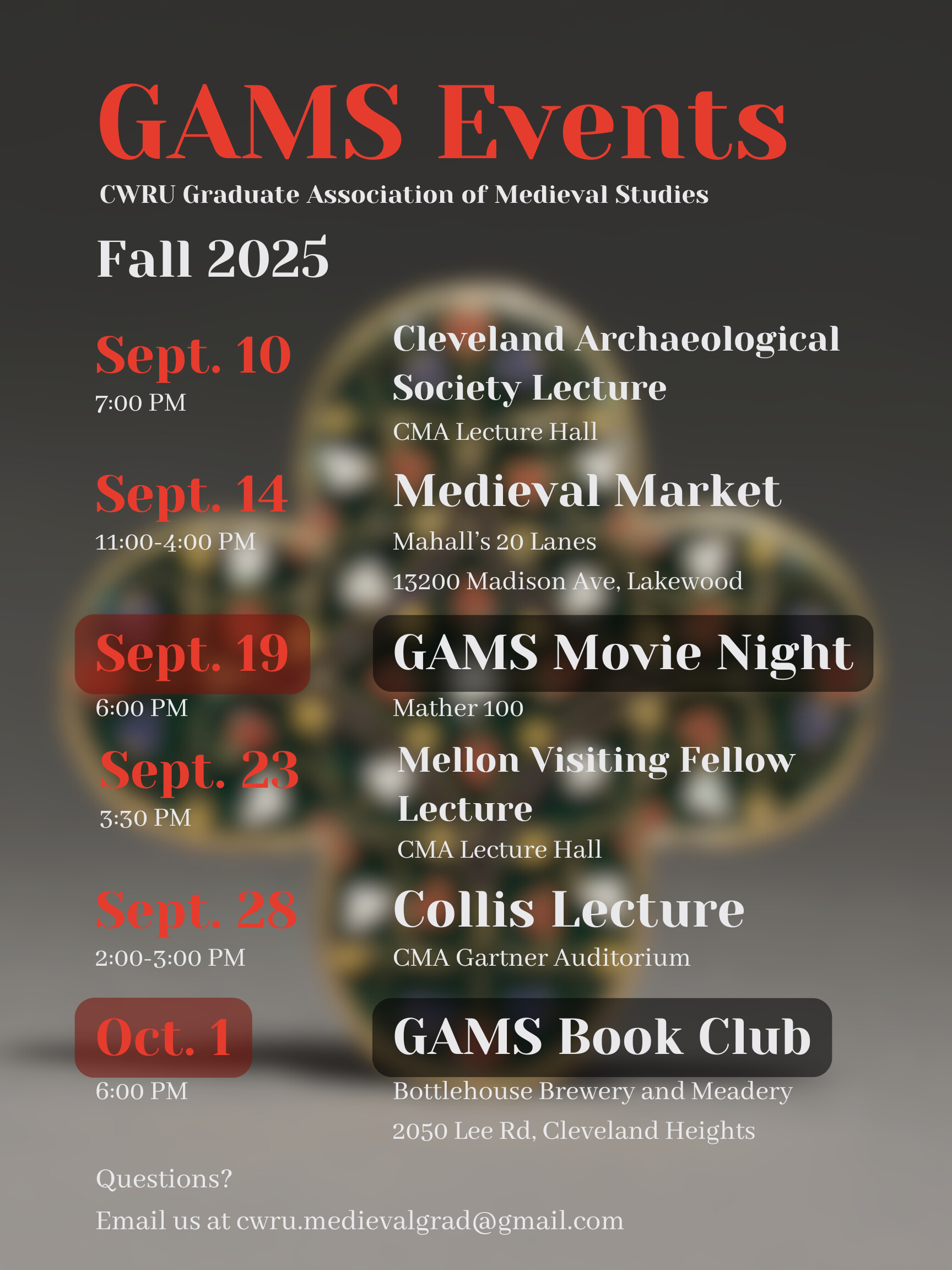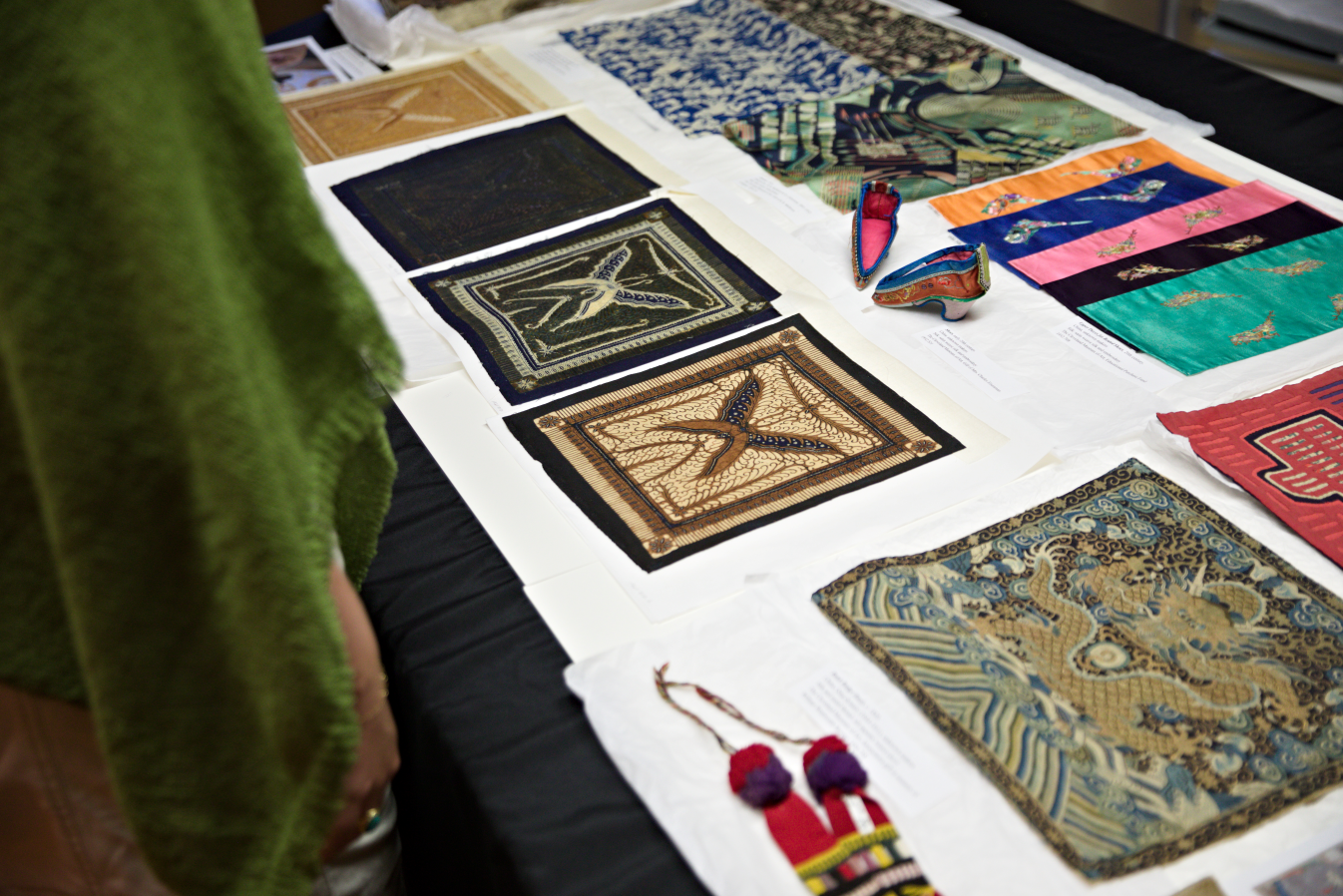Reed O’Mara, PhD candidate in medieval art and Mellon Foundation Fellow, recently completed a year-long curatorial internship at the J. Paul Getty Museum in Los Angeles, CA. While there, Reed helped to produce and write an in-gallery video game, The Pilgrimage Road. The game takes players through the Camino de Santiago, a popular medieval pilgrimage to see the relics of St. James, and was part of the exhibition Going Places: Travel in the Middle Ages. You can read more about the game and Reed’s work here.
Graduate Students
Congratulations to Alli Boroff, a second-year MA student in medieval art and a Keithley Fellow, and Madalyn Fox, a second-year MA student in the Art History and Museum Studies program and a Barbato Fellow on their publications in CAN Journal! Alli’s piece is a review of Pintoricchio Magnified: An...
All are welcome!
On behalf of the Graduate Association of Medieval Studies (GAMS), welcome to the Fall 2025 semester! We have many exciting academic and social events coming up.
September 10th, 7:00 PM — Cleveland Archaeological Society Lecture. Nasser Malit, “Echoes of the Ancestors: Uncovering Medieval Burials in Kenya’s Central Highlands,” CMA Lecture Hall.
September 14th, 11:00-4:00 PM — Medieval Market and Brunch. Public event at Mahall’s 20 Lanes (13200 Madison Ave, Lakewood) with free admission. More information at this link.
September 19th, 6:00 PM — GAMS Movie Night. We will meet at Mather 100 on campus. Please RSVP to this event using this form.
September 23rd, 3:30 PM — Mellon Visiting Fellow Lecture. Elisabeth O’Connell, “Material Matters: The Hay Archive of Magical Spells on Leather,” CMA Lecture Hall.
September 28th, 2:00-3:00 PM — Dr. John and Helen Collis Lecture. Alicia Walker, “Virtue and Adornment in Byzantium: Beautiful Bodies in the Christian East,” CMA Gartner Auditorium.
October 1st, 6:00 PM — GAMS Book Club with Prof. Gertsman. We will be discussing A Morbid Taste for Bones by Ellis Peters.
Stay tuned for our October and November events including medieval art lectures by Melanie Holcomb and Margaret Graves!
Congratulations to PhD student Luke Hester and TWDC’s Programming and Marketing Manager Rebekah Utian (CWRU Art History MA ‘24) who co-organized a Pop-Up Museum, “Storied Threads: Natural Fibers from Past to Present,” hosted by the Tremont West Development Corporation as part of its Arts in August series. The Pop-Up...
Just two more weeks to see Prof. Elina Gertsman’s and Dr. Gerhard Lutz’s Creation, Birth, and Rebirth show, which was a central feature in this issue of art/sci magazine, and was reviewed in the print version of Plain Dealer and on cleveland.com. The feature highlights the collaboration between the program and the museum, as well as the role of graduate students in the making of the show and writing its didactics. The magazine, in its new online format, further links to the December interview with Prof. Maggie Popkin about the NEH Public Scholars award given in support of her new book on souvenirs, and announces international symposia convened by Prof. Elizabeth Bolman and Reed O’Mara.
Congratulations to Sam Truman, PhD candidate in medieval art, who recently presented her paper “‘Straunge Sights’: The Representation and Reception of Samuel’s Ghost in the Early Modern Period” at the Ghosts in Britain and Ireland, 1500-1950 conference held at Mary Immaculate College in Limerick, Ireland. The paper considered how the reception of an image of the Raising of Samuel found in a manuscript of John Lydgate’s Fall of Princes (British Library, Harley MS 1766) changed in the wake of the Protestant Reformation.
Sam is also co-organizing and co-chairing two panels at the 2025 International Medieval Congress, which will be held in Leeds, England July 7-10. These panels, “The Living Dead and the Transmission of Otherworldly Knowledge in Medieval Texts and Images I & II,” will feature a paper by recent department graduate Angie Verduci!
2026 International Congress on Medieval Studies
May 14 – 16, 2026 | Kalamazoo, MI
Organizers: Elina Gertsman (Case Western Reserve) and Nikki DeLuca (University of Vermont)
Cherubim of the Ark, Nicanor’s Gates, the Grail, the reliquary of Sainte Foy: metal objects, real and imaginary, imbued with magic or channeling the miraculous, haunt the long history of medieval art. This session seeks to inquire into material significance of metals, and we invite papers that explore a broad array of themes knotted around their physical and allegorical properties. Topics may include but are not limited to semiotics of metal artefacts; metaphysics of metals; metal’s material relationship with other substances, such as earth or stone; metal visualized in other media; metals and alchemy; metals and cosmology; metals and the supernatural; and metals in prophetic and eschatological discourses. Interdisciplinary approaches are welcome, but the heart of the session lies in its focus on the visual universe of metals manifested as objects: extant, described, or evoked.
Submit your abstract by September 15 here!
The multi-year international joint project, Abstraction Before the Age of Abstract Art, spearheaded by Prof. Elina Gertsman and Prof. Vincent Debiais (École des hautes études en sciences sociales | EHESS), saw its latest event in Paris with the lecture delivered by Prof. Gertsman on abstraction in medieval Sephardic haggadot. The project, which began with the support of the French-American Cultural Exchange Foundation grant, and was picked up last year as part of the collaborative series at the Institut national d’histoire de l’art, took graduate students to both sides of the Atlantic to attend and participate in workshops and symposia in Cleveland and Paris, as well as in the conferences co-organized by Gertsman and Debiais at Princeton University and EHESS.
Tracing Jewish Histories blog post is now live! In addition to a detailed description of the Courtauld conference, it contains a link to recordings of both days of talks. Read it here! Once again, congratulations to Reed on organizing this fantastic endeavor and to Sam, Claudia, Sarah, Tess, Darren, and Alli for chairing and moderating!
This course will explore developments in medieval Japanese art, starting with the rise of cloistered imperial rule in the eleventh century and ending in the sixteenth century with the violent upheaval of the Sengoku era. From the expressive formations of wood sculpture, to the flowing brushwork of ink painting, and the crackling surfaces of tea ware, students will consider how visual culture embodied this dynamic period in Japanese history. We will begin with an introduction to major historical and cultural movements in Japan’s middle ages, considering the impact of art across social strata. Subsequent class sessions will delve into central themes that shape contemporary understandings of medieval art, including intercultural exchange, materiality and the natural world, and intersections of healing and image-making practices.
The Department of Art History and Art at Case Western Reserve University (CWRU) invites current and recent graduate students in art history and related disciplines to submit paper abstracts for the 2025 Annual Cleveland Symposium, Love and Desire in the Visual Arts, July 21, 2025. Held in partnership with the Cleveland Museum of Art as part of the joint program between CWRU and CMA, the Cleveland Symposium is one of the longest-running annual art history symposia in the United States organized by graduate students. This year’s symposium welcomes innovative research papers that explore themes of love and desire as manifested in any medium as well as in any historical period and geographic location. Please click below for more information!












